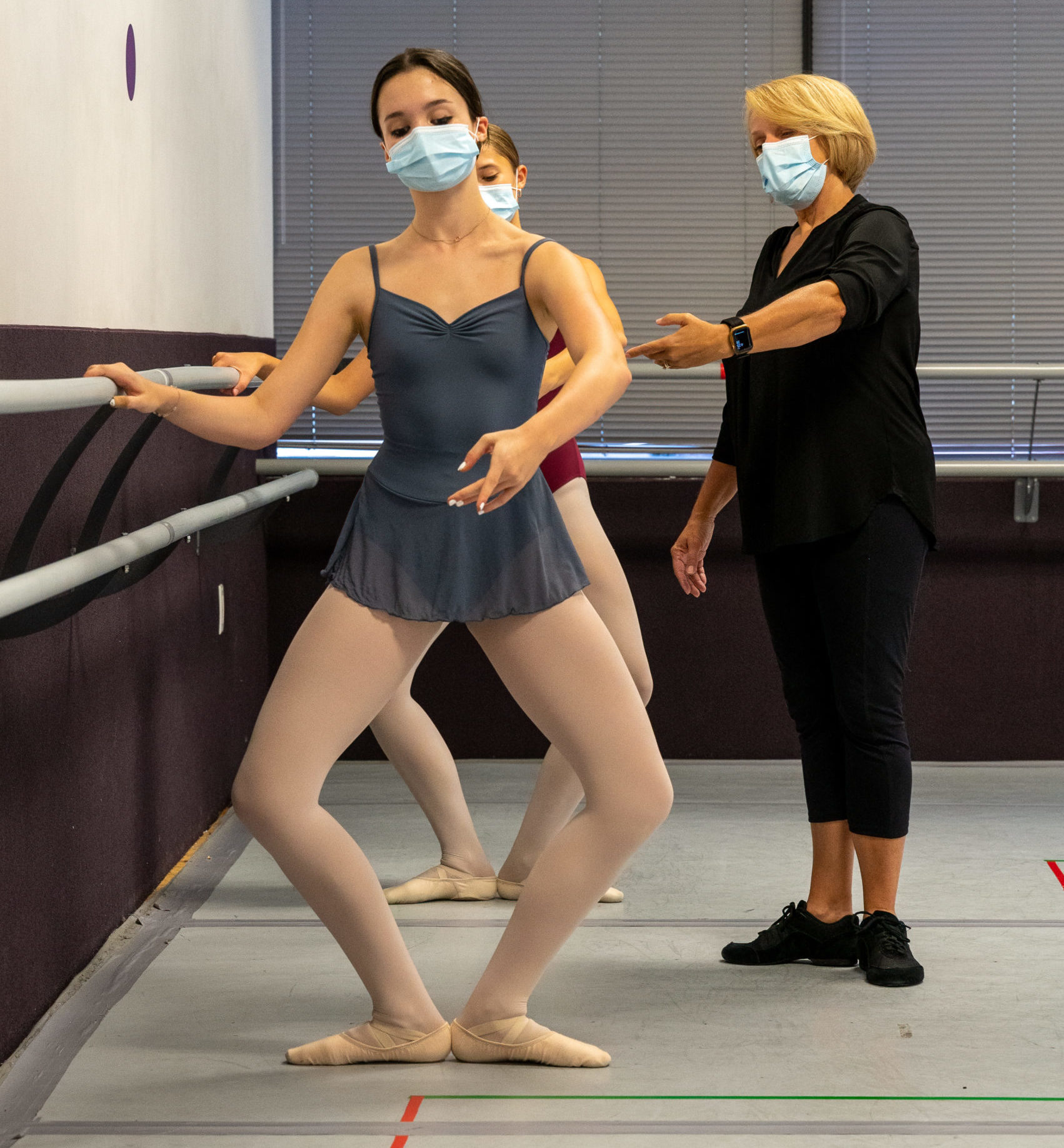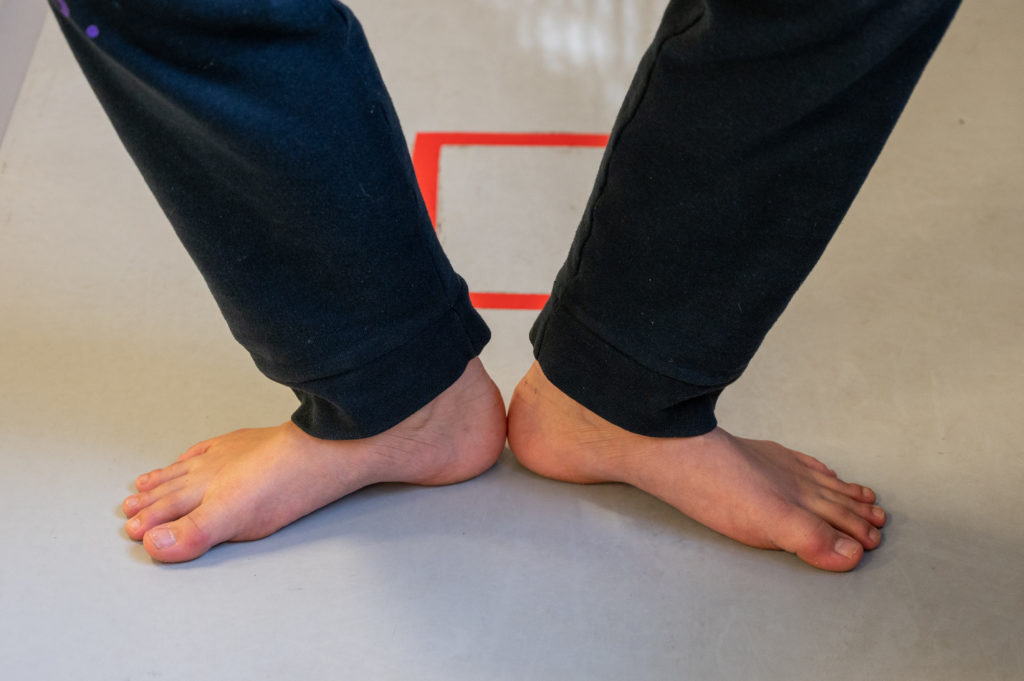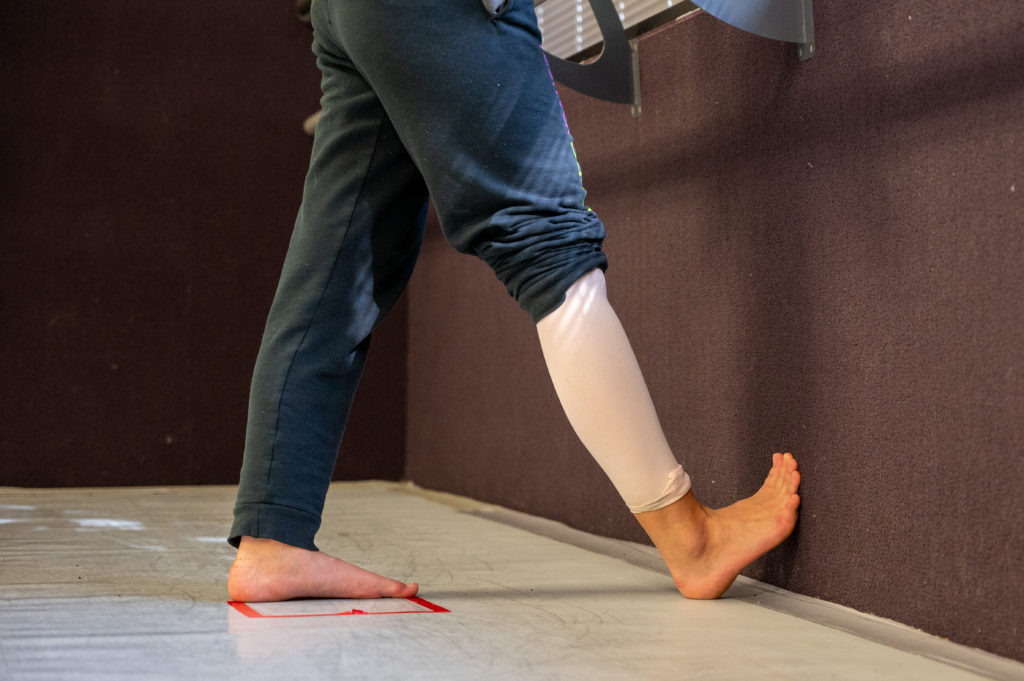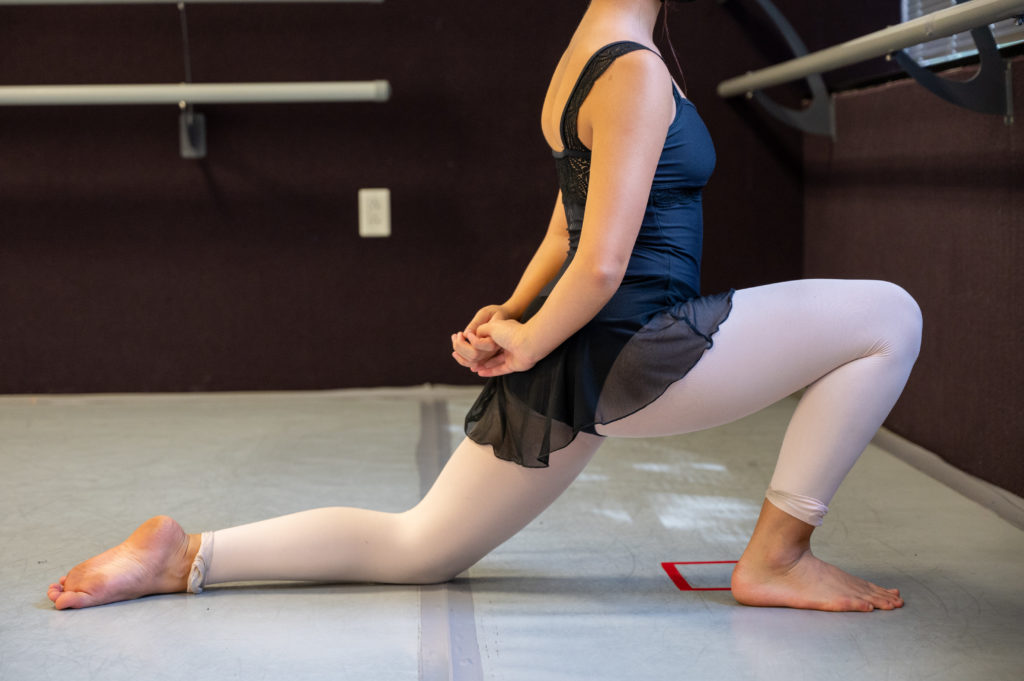
There’s a reason why plié is one of the first steps that ballet students learn. It’s the foundation for nearly everything else they’ll do—from jumps to turns to balances—and without a solid one, it’s nearly impossible to advance to more difficult steps.
Ideally, a plié should marry function and form, providing enough stability, power and shock absorption for whatever comes before or after it, while achieving a juicy, luscious quality that enhances your students’ artistry.
Dance Teacher asked Gretchen Vogelzang, the director of the Greater Washington Dance Center, how she helps students achieve a deep, dynamic plié that’s as useful as it is beautiful.
Teach Good Alignment
“In terms of plié, tension is your biggest enemy,” says Vogelzang, who has a background in kinesiology. The source of this tension, she says, often stems from misalignment: “If the pelvis is not aligned properly, everything has to grip to hold on.”
Assess your students’ plié from top to bottom to make sure they are lined up properly: Is their pelvis in a neutral position? Is their core engaged? Are knees tracking over toes? Are all five toes on the floor, with the arch of the foot supported? Vogelzang says that addressing misalignment higher up the kinetic chain often helps with problems lower down, and allows dancers to plié with more freedom.

Stretch Smart
Some students may be limited in their plié by a tight gastrocnemius or soleus. Vogelzang’s favorite stretches for these muscles include placing the hands on a wall or barre and extending one foot back, heel to the floor (do this both in parallel and slightly pigeon-toed to target both the calf muscles); and putting the toe on the wall and the heel on the floor and gently bending the knee or pushing forward. Limited mobility in the hips can be another factor: For hip stretches, Vogelzang recommends a deep runner’s lunge, progressing to place the elbows on the ground inside the leg. She also suggests foam rolling and trigger-point therapy with a ball; just be sure you’ve taught students how to do so safely and with proper technique.

Focus on Quality
Sometimes a plié’s depth can be limited by anatomical factors beyond a dancer’s control, like a short Achilles tendon, or more serious issues, like ankle impingement. But even when dancers have reached the limits of the shape of their plié, there’s still much they can do to get that juicy quality—and create the illusion that their plié is deeper than it actually is.
Encourage dancers to use the strength of their quadriceps to modulate the speed of their plié’s descent, says Vogelzang, playing with the idea of resisting or slowing down. Choosing your music for plié strategically can aid in this, she says, suggesting teachers avoid music in 2/4, which can encourage a rigid down-and-up, and instead opting for a 3/4, which leaves more space for a luxurious quality.
She also recommends cueing dancers to coordinate their exhale with their plié, and teaching them to mask a short plié with the upper body. “It’s one thing to come down suddenly and abruptly,” she says, “but it’s another thing if you come down and let your arms continue the motion.” Just make sure dancers aren’t resorting to unsafe cheats, like lifting their heels at the bottom of the plié.

Use Creative Imagery
One of Vogelzang’s most tried-and-true images for plié is mice in a cave: She tells younger students that there is a cave under the arch of each foot where a family of mice lives, and that they can’t squish the mice. Even when students get older, she can cue them to not squish the mice to remind them not to roll in on their arches, which is essential for proper foot placement in plié. Vogelzang also loves the image of sinking into molasses.
What Pliés Can Do
Plié may not ever be the step that gets students excited. But, by emphasizing what students can do with a strong plié—jump higher, land more safely, transition faster—you can encourage them to give the step the attention it deserves. “There’s very little in ballet that can happen without a really awesome plié,” says Vogelzang.
Watch this video tutorial led by Vogelzang to help your students achieve deeper, more dynamic pliés.





